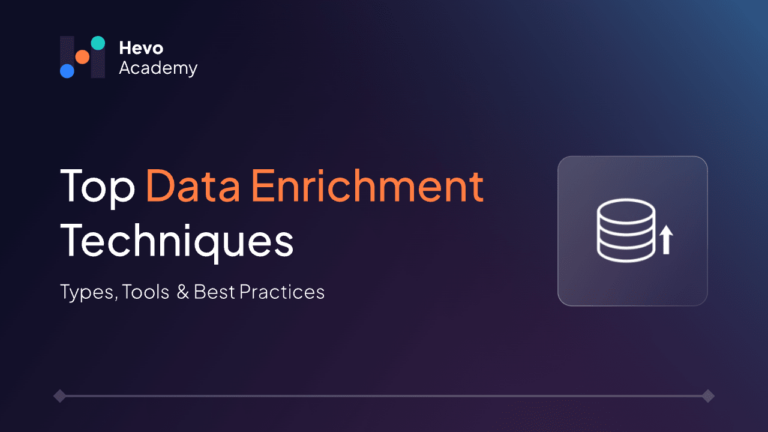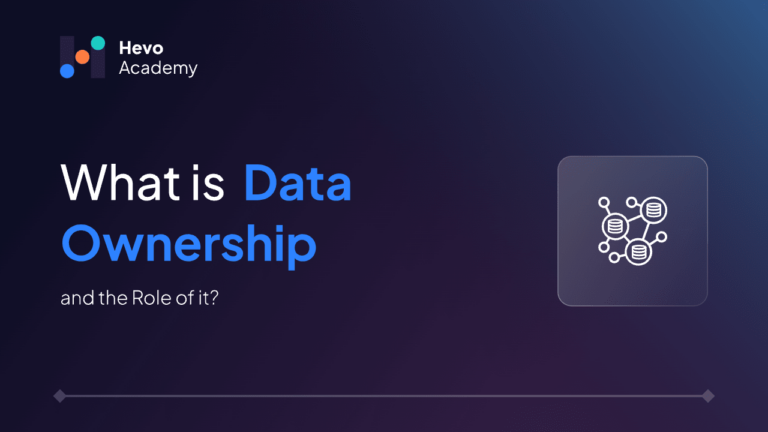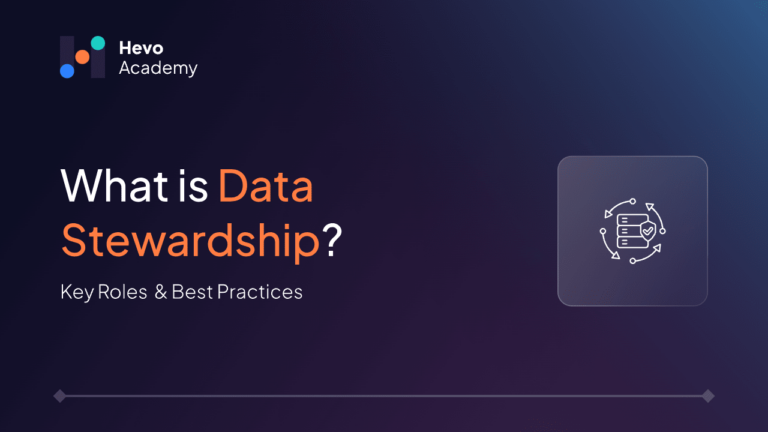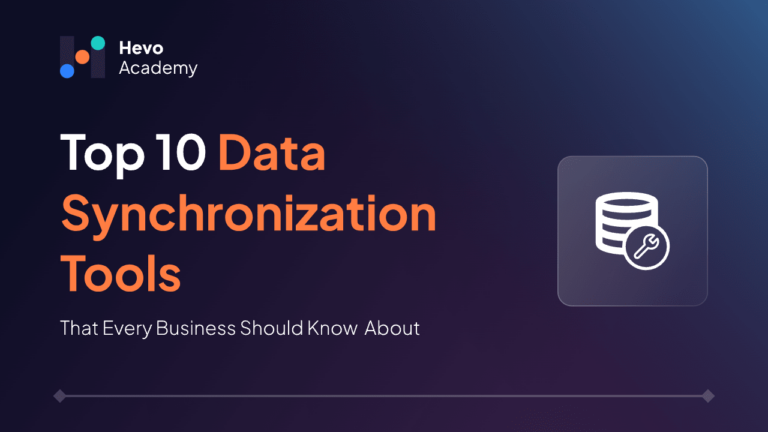Imagine having all your data at your fingertips, but it is raw and scattered. It’s frustrating, right? That’s where the data enrichment techniques come in. Irrespective of your domain and role, enriched data can help you gain more powerful insights and help you connect the dots which you might not have done before.
Table of Contents
So, in this blog, we will be exploring how data enrichment works, its benefits, and the tools and techniques required to make your data truly valuable. Let’s dive in!
What is Data Enrichment?
We know data is mostly unstructured, unclear, and messy. It is very difficult to get proper and meaningful insights from this kind of data. So, you can say that data enrichment is like a makeover to the personality of data to enhance its value. Let’s see its work through an example:
You have a list of customers with their names and email, it can be enhanced with extra details, such as their purchasing behavior and even social media activity.
Why Should You Care About Data Enrichment?
Well! Data without context is like a book with missing chapters. Guess, what is the point of having data on customers and their emails? But if we enhance it with additional details as in the above section, it would help to know your customers better and increase positive customer experience.
Here’s how it makes a difference:
- Know Your Audience Better: Are you truly familiar with your customers and all that they entail? Yes, you might have their basic details, but when you have the enriched data it helps you go further. If you have more information such as demographic data, activities, or even interests, it will be easier to subdivide your audience.
- Make Smarter Decisions: If your data is enriched you are not operating in this dark guessing space, you are operating confidently in a strategic space. From coming up with a new product to determining where to spend your marketing dollars, enriched data is the information that you need to make a smart move.
- Personalize the Outreach: It’s not just a buzzword, but a trend customers are expecting from companies more and more. They neither want to receive ordinary emails, nor ordinary advertisements; what they desire is something personal. That is where data enrichment comes in to make it possible.
- Boost Sales Productivity: Hey sales teams, guess what? You definitely would love enriched data, as this will enable targeted follow-ups and faster conversions. So, they don’t have to spend time on the weak leads, while targeting the leads that have the probability to turn to clients.
- Stay Complaint: Data privacy is no joke. Laws like GDPR and CCPA indicate that customer data must be dealt with appropriately—and sometimes it comes without a second chance. Data enrichment helps to provide more accurate and relevant data and also to be in compliance with these rules. Read about data governance vs data security and why both are essential for maintaining the integrity and protection of data.
Top Data Enrichment Techniques to Try
Here’s the deal: going through raw data without putting it in some degree of context is like trying to bake a cake from scratch with no directions; it will undoubtedly create a huge amount of chaos. To enhance information is to make them real, concrete, and semantically charged. Here’s why it’s a game-changer:
1. Data Appending: Filling in the Gaps
Do incomplete profiles of customers exist? Data appending involves filling in the blanks as it were, with items such as phone numbers, employment titles or identification numbers, or social media accounts, for instance. Read about data completeness to ensure that the data is accurate and reliable for consumption
How Tech Helps: Being built on integrated technologies, Clearbit and ZoomInfo bring in the latest and verified data from outside sources to records.
2. Data Segmentation: Organizing for Clarity
Sub-categories can be by demography, behavior, or geographic location among others. This makes it possible to define those who may require certain messages, and so ensure that the right message gets through.
How Tech Helps: Most of the current CRMs such as HubSpot and Salesforce allow you to segment your audience through the simple click of a button.
3. Entity Extraction: Picking Out Key Details
Transform the disorganized free-form text into the highly valuable by using an entity extractor that identifies such things as names, places, and products.
How Tech Helps: Technology like AWS Comprehend or Google Cloud NLP, can analyze the entity itself from the emails, reviews, or social media channels.
4. Derived Attributes: Uncovering Hidden Insights
Derived attributes allow user to form new benefits out of the given values. For instance, customer LTV can be an aggregate of a specific number of past purchases, or buying behavior can be forecasted from a person’s background info.
How Tech Helps: Such derived attributes may be easily computed by Machine learning tools like Azure Machine Learning from patterns and therefore may not pose a challenge.
Types of Data Enrichment
It is also important to understand that data enrichment is not equal. There are two major forms of enrichment that you will consider depending on the overall objectives of the business. So let’s look at when and how each type can help in terms of ‘when’ addressing the reasons that they might be useful and ‘how’ by showing you examples of real workplace situations.
1. Contact Enrichment
You know those half-full profiles, where they fill in just name or email? Frustrating, right? Contact enrichment resolves that by providing phone numbers, articles, or titles, and social accounts.
Why it matters: Suppose sales representatives in your organization want to contact a lead, but the only detail you have is an email address. Adding a phone number to that contact makes it easy for them to follow up with you and it’s a more personal call than an unknown number. Combined with the feeling that it is like moving from a one-way street to a highway!
2. Geographic Enrichment
Your customers’ home ground has so much to tell you about what you need to do for them. Geographic enrichment provides information such as zip codes, time zones, or even the local climate conditions.
Why it matters: Suppose you operate an electric scooter service if you’re aware that your customer lives in zip code 90210, you can provide them with bonus features such as a ‘two scooters for the price of one for rush hour’ deal in densely packed areas. Extra credit if you choose the local weather to type ‘Rainy day? Order in!” promo.
3. Behavioral Enrichment
So are you in a position to know who among your customers are out there? Behavioral enrichment monitors something they purchased, viewed, or clicked on and then adds that to their profiles.
Why it matters: Imagine, a specific person came to your website and put a pair of sunglasses into a shopping cart but never completed the purchase. You can send them a friendly email: “Still confused about those shades? Here is your special offer; “10% off and so you can,” Behavioral data tells you how to guide them towards action while avoiding the feeling of a push sell.
4. Firmographic Enrichment
If you are a business-to-business marketer then this one is for you. Additional information provided in firmographic information includes; size, Revenues, industry, and number of employees in the company.
Why it matters: Let’s say you are selling enterprise software. The ability to push company data into your lead list streamlines your targeting process to your ideal clients such as mid-sized technology firms that generate over $10 million in revenues. No more spinning your wheels chasing things that aren’t a good fit for your business.
Tools That Make Data Enrichment Easy
Here’s a quick comparison of some popular tools that can take your data enrichment game to the next level:
| Feature | Clearbit | ZoomInfo | InsideView | RingLead |
| Primary Use Case | Lead enrichment | B2B contact enrichment | Market Insights | Data standardization |
| Integration Support | CRM, marketing platforms | CRMs, ERPs | Sales tools, CRMs | CRMs, databases |
| Real-Time Enrichment | Yes | Yes | No | Yes |
| Enrichment Types | Contact, firmographic | Firmographic, geographic | Behavioral, geographic | Contact, geographic |
| Compliance | GDPR, CCPA | GDPR, CCPA | GDPR, CCPA | GDPR, CCPA |
| Pricing | Subscription | Custom pricing | Subscription | Pay-per-use |
Best Practices for Data Enrichment
Before you dive in, keep these tips in mind to get the most out of your data enrichment efforts:
1. Set Clear Goals
Before you start enriching data, ask yourself: What’s the goal here? Do you want to classify customers more effectively (segmentation)? Perhaps, you may wish to sort leads in order to determine which leads are more likely to purchase your products (lead scoring).
For example, if your goal is better customer segmentation, then the product might include additional demographic information such as age and location. However, if it’s about lead scoring, the data of the firmographic model, including the company size and revenue is more prioritized. Going straight to the goal means that only the data that will be used will be enriched thus making the whole process more efficient.
2. Use Reliable Data Sources
Just think about enhancing your customer database with social media interests only to discover that half of the data is stale or wrong. It is incredibly frustrating but what is worse, it is unproductive at its core.
Select those providers or tools that are most reliable to transfer content and are in compliance with common legal requirements. For instance, a tool such as Clearbit allows real-time updates, and verified data, and, therefore, its users will not be in doubt if the email they are sending is likely to bounce.
3. Automate for Efficiency
The manual process of ingesting new data is much like washings clothes by hand – it is doable, but without a washing machine, why bother? Work with tools that enrich your data on the fly so that you can roll in more value upon each data set.
For instance, an enrichment tool combined with CRM will be able to automatically refresh contact data every time the person visits a website. If a customer fills in a form and types in his email, the system will be able to automatically extract the company name and his LinkedIn profile, which means that you won’t have to spend hours on this.
4. Review and Update Regularly
Data is exactly like milk it spoils if left for a long time. It is also important to check for the validity of the data that you have enriched time by time.
For instance, a customer could have changed their position in the company, or they might have relocated. If you’re still sending them offers based on that data, you’re wasting your money and your shots at getting on their bad side. It is always advisable to schedule timely data updates on any of the subtopics to refresh the remaining portion of the research work.
Wrapping Up
Let me make it very clear right at the onset: Data enrichment doesn’t have to be complicated or something that most people are daunted to do. Fundamentally, it’s about getting your data to be smarter to aid your decision-making, reach your customers, and increase your revenues.
But you don’t have to jump straight to fixing all the issues. Start with cleaning the signal, choose one method of enrichment, and wonder how it changes your findings. Enhance your data enrichment with Hevo’s no-code data platform and automate your workflows.
Connect with Hevo now to transform your data enrichment experience and maximize the potential of your data!
FAQs
1. What are the techniques of data enrichment?
The approaches include demographic enhancement, geographical enhancement, behavioral data fusion, and social network profiling.
2. What is data enrichment in data quality?
It is the process of modifying the existing datasets for the purposes of increasing the quality and existing data to conform to the specified standards.
3. Which set of procedures is an example of data enrichment?
Adding missing contact details, adding geographical data, and also adding firmographic data.
4. What is the difference between data enrichment and data cleansing?
Data cleansing removes errors and inconsistencies, while enrichment adds new, valuable information.





